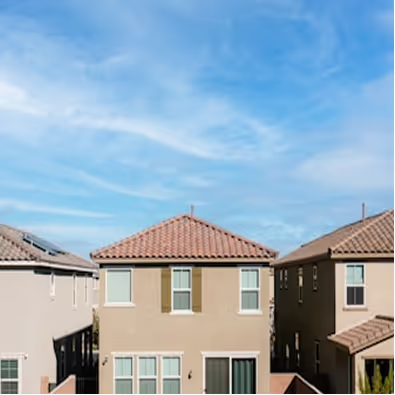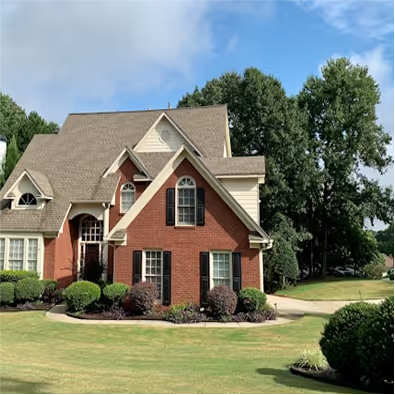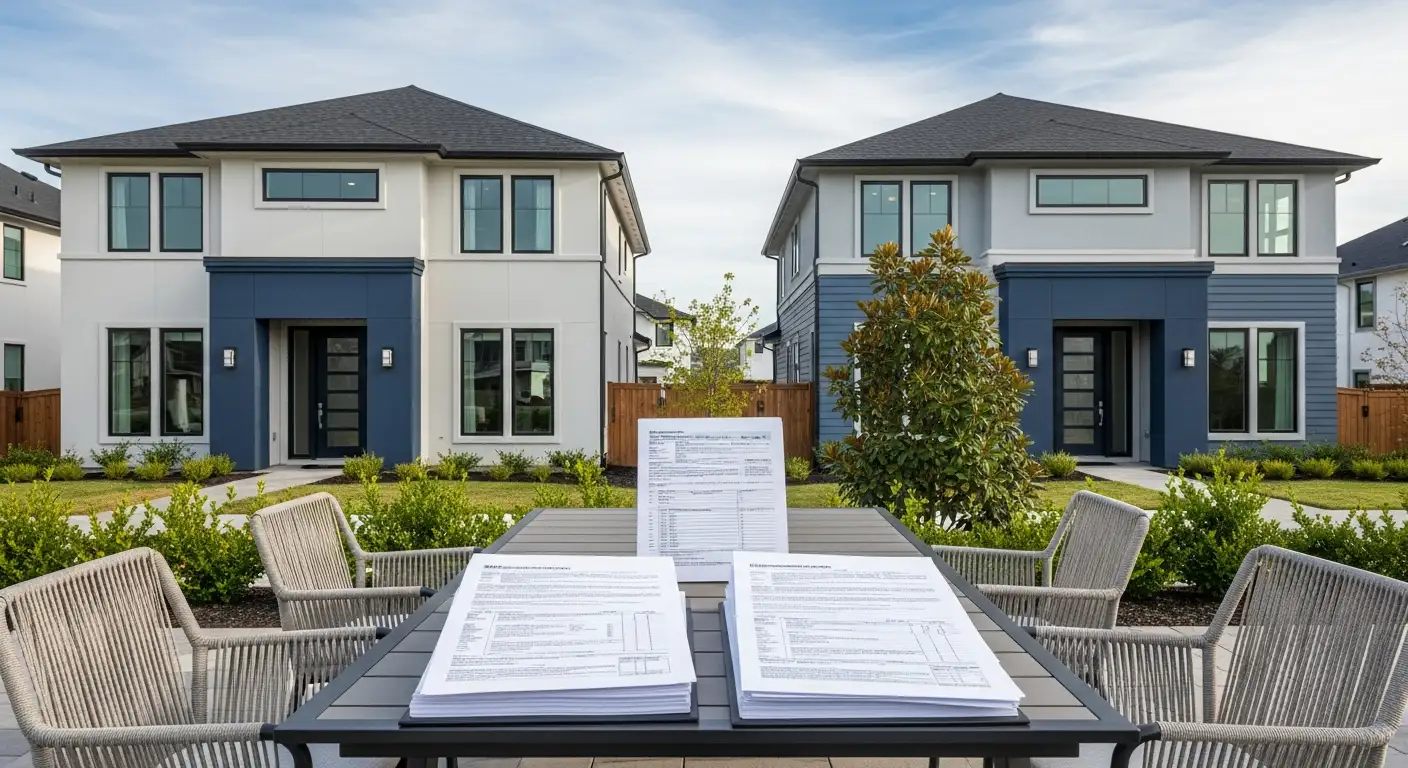Understanding the Essentials of Refinancing Costs
Refinancing a mortgage can be a strategic financial move to reduce monthly payments, shorten loan terms, or tap into home equity. However, the process comes with several closing costs that can impact the overall benefits. Knowing how to calculate refinancing closing costs is crucial for homeowners to make informed decisions. This article breaks down the calculation process, explains the various fees involved, and highlights how to evaluate these costs against potential savings.
What Are Refinancing Closing Costs?
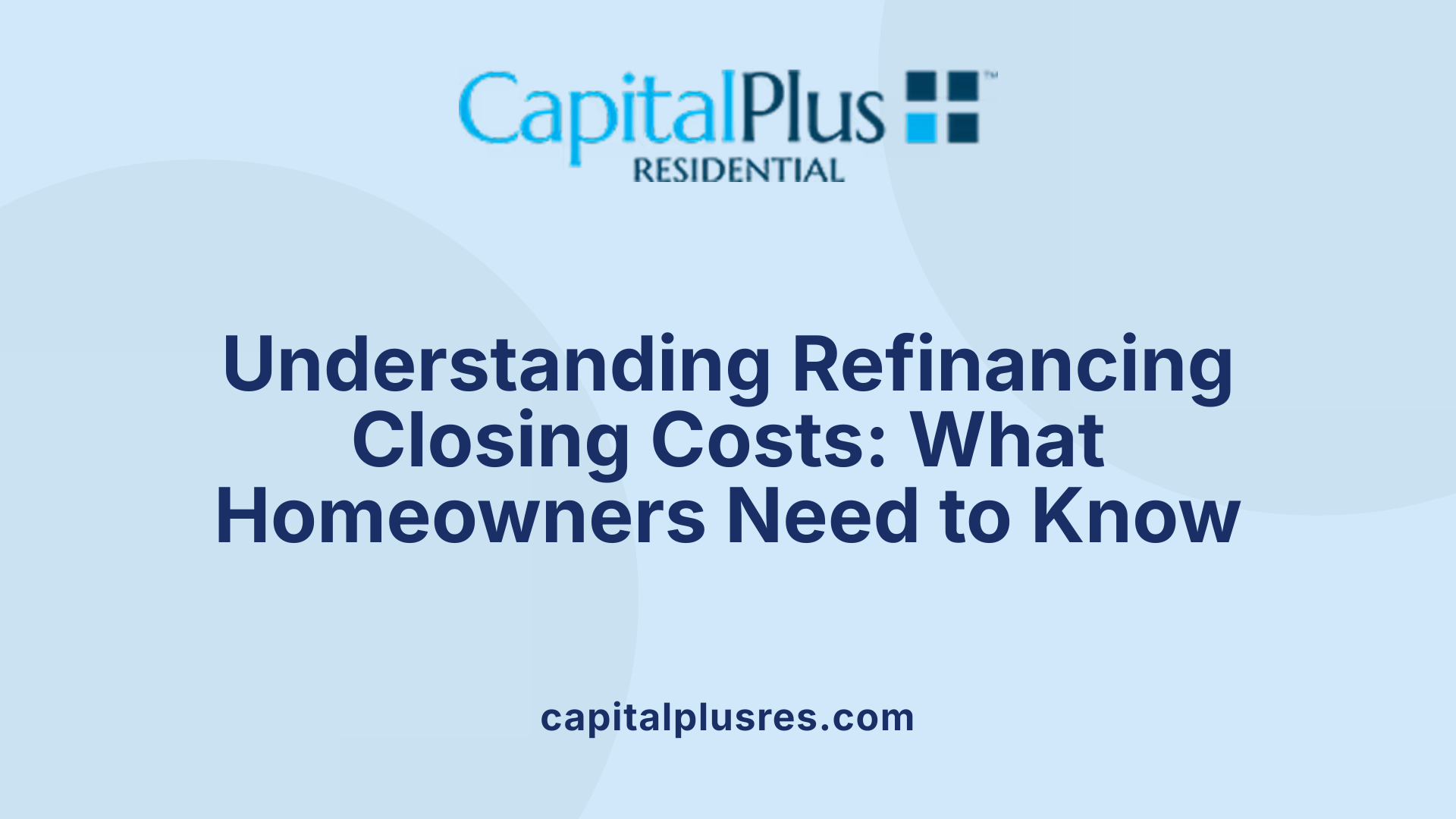
What are refinancing closing costs?
Refinancing closing costs are the fees and expenses that homeowners must pay when they replace their existing mortgage with a new one. These costs cover the administrative and legal charges associated with securing the new loan. Typically, refinancing closing costs range from about 2% to 6% of the total loan amount.
What typical fees are included in refinancing closing costs?
Refinancing closing costs consist of both flat fees and percentage-based fees. Common flat fees include:
- Application fees ($75 to $500)
- Home appraisal fees ($225 to $700)
- Credit report fees ($50 to $80 per applicant)
- Document preparation fees ($50 to $600)
- Title search and insurance fees ($400 to $900)
- Recording fees ($25 to $200)
- Flood certification fees ($15 to $50)
Percentage-based fees often cover:
- Loan origination fees (0.5% to 1% of the loan amount)
- Mortgage points (typically 1% of the loan amount per point)
- Mortgage insurance premiums (vary by loan type)
These costs can vary depending on the lender, loan type, and location, so it's important to compare offers and consider ways to minimize expenses when refinancing.
Key Components of Refinancing Closing Costs

What fees are involved in refinancing closing costs?
Refinancing closing costs encompass a variety of fees, both flat-rate and percentage-based, which can total 2% to 6% of the loan amount. Understanding these helps borrowers prepare for the financial commitment involved.
Breakdown of typical flat fees
- Application fees: Usually ranging from $75 to $500, these cover processing your refinance request.
- Home appraisal fees: Necessary in most cases to verify property value, typically $225 to $700.
- Credit report fees: Charged per applicant, generally $50 to $80, to assess creditworthiness.
- Document preparation fees: Fees between $50 and $600 for preparing loan documents.
- Title search and insurance fees: Essential for ensuring clear property ownership, costing $400 to $900.
- Recording fees: Between $25 and $200 for public recording of documents.
- Flood certification fees: Usually $15 to $50, to determine flood zone status.
Percentage-based fees
- Loan origination fees: Typically 0.5% to 1% of the loan amount, these compensate the lender for processing and underwriting.
- Mortgage points: Each point equals 1% of the loan amount, paid upfront to lower your interest rate.
- Mortgage insurance premiums: Vary by loan type and are required if your equity is below certain thresholds.
Third-party and lender fees
Many of the fees, such as appraisal, title insurance, and recording fees, are paid to third parties and are generally less negotiable. Lender fees, including origination and processing fees, often can be negotiated or offset with lender credits or client incentives.
By carefully reviewing these components, borrowers can better estimate their refinancing costs and explore strategies such as lender credits or rolling fees into the loan to manage cash flow.
| Fee Type | Typical Cost Range | Description |
|---|---|---|
| Application Fee | $75 - $500 | Covers loan processing |
| Home Appraisal | $225 - $700 | Verifies property market value |
| Credit Report | $50 - $80 per applicant | Assesses credit history |
| Document Preparation | $50 - $600 | Prepares loan documents |
| Title Search & Insurance | $400 - $900 | Ensures property ownership is clear |
| Recording Fee | $25 - $200 | Public record filing fees |
| Flood Certification | $15 - $50 | Identifies flood zone status |
| Loan Origination Fee | 0.5% - 1% of loan amount | Lender's fee for processing |
| Mortgage Points | 1% of loan amount per point | Prepaid to reduce interest rate |
| Mortgage Insurance | Varies | Required if equity below certain levels |
How Various Inputs Affect Refinancing Costs
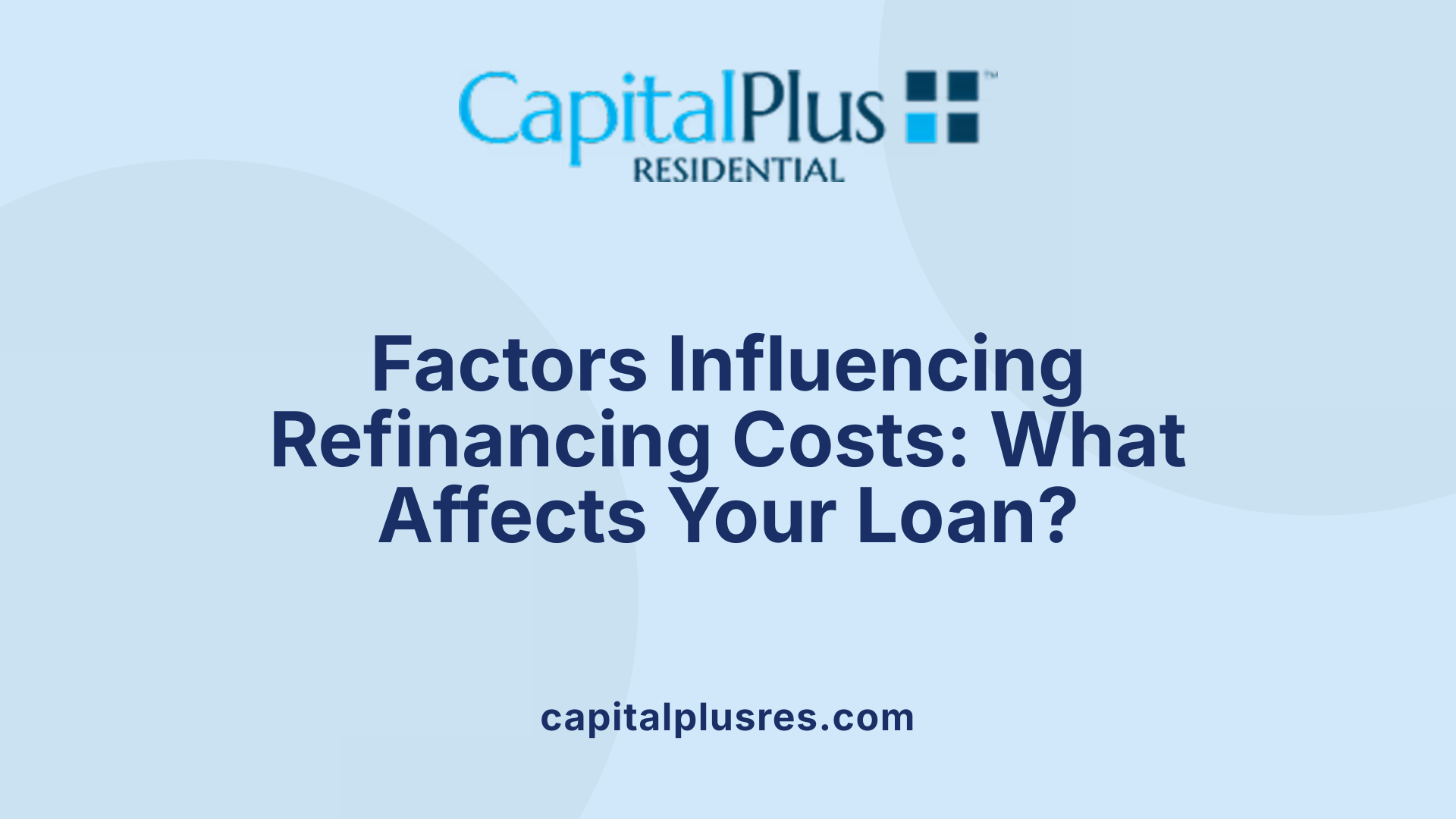
What factors impact the calculation of refinancing closing costs?
Refinancing closing costs are influenced by a range of important inputs. The appraised value of the home plays a crucial role, as many fees are percentage-based and tied directly to the property’s value. The loan amount and term determine the base size and duration of the mortgage, affecting both upfront fees and monthly payments.
Interest rates impact the overall cost because higher rates can lead to larger monthly payments and potentially greater total costs. Property taxes and homeowners insurance premiums are included since they contribute to the escrow portion of payments and closing fees.
Several detailed fees also shape the final cost breakdown. These include origination charges, discount points purchased to lower interest, appraisal and credit report fees, flood certification, tax service charges, and lender and owner’s title insurance fees. Settlement and government recording fees further add to the total closing costs.
Loan type plays a vital role in cost variations. For example, government-backed loans like FHA streamline or VA IRRRL often boast lower or waived appraisal fees and reduced closing costs. Some loans offer special lender credits—such as U.S. Bank’s 0.25% credit toward closing fees—that can alleviate out-of-pocket expenses.
The borrower’s credit score also significantly affects closing costs. Higher credit scores typically translate to lower fees and better interest rates, reducing the overall refinancing expense. Conversely, lower scores might increase costs or limit available loan options.
Understanding these factors can help homeowners estimate refinancing expenses more accurately and select loan options best suited to their financial goals.
| Input Factor | Influence on Closing Costs | Additional Notes |
|---|---|---|
| Appraised Value | Influences percentage-based fees like origination and points | Higher values can increase total closing fees |
| Loan Amount | Affects loan-based fees and monthly payment estimates | Larger loans usually have higher fees |
| Loan Term | Duration impacts interest accumulation and monthly costs | Shorter terms might have higher monthly payments |
| Interest Rate | Determines overall financing cost | Lower rates usually reduce monthly payments and costs |
| Property Taxes & Insurance | Included in escrow and closing summaries | Varies by location and policy |
| Loan Type | Different programs have varying fees and credits | FHA, VA, USDA loans may lower fees or waive appraisals |
| Credit Score | Influences loan eligibility and fee levels | Higher scores tend to reduce costs and improve terms |
Using a Mortgage Refinance Cost Calculator

How does a mortgage refinance cost calculator help estimate closing costs?
A mortgage refinance cost calculator is a valuable tool designed to help homeowners estimate the total costs associated with refinancing a mortgage. By inputting various details related to the loan and property, it calculates an estimated total of closing costs and provides a detailed breakdown. This insight assists in making informed financial decisions before starting the refinancing process.
What types of inputs are necessary?
To generate an accurate estimate, the calculator requires several key inputs, including:
- Appraised property value
- Loan amount and loan term
- Interest rate
- Property taxes and homeowners insurance
- Loan origination fees and discount points
- Appraisal costs
- Credit report fees
- Flood certification and tax service fees
- Title insurance expenses
How do calculators provide total estimated costs and breakdowns?
Using these inputs, the calculator adds up various cost components such as lender fees, third-party fees (appraisal, title search, recording), and prepaid items. It displays a comprehensive total refinancing cost along with an itemized list of fees involved. This transparency enables homeowners to see where the main expenses lie and to anticipate the upfront costs.
Can you provide example calculations?
For instance, a refinance of a $225,000 loan with a 30-year fixed rate at 3.875% might estimate monthly payments of about $1,058 (excluding taxes and insurance). The refinance closing costs can total approximately $6,746, which reflects typical fees like appraisal, title insurance, and origination charges. Understanding these figures helps borrowers evaluate if refinancing will be financially advantageous.
By leveraging a refinance cost calculator, homeowners can prepare for the full scope of refinancing expenses and compare multiple offers more effectively, ultimately supporting better decisions in mortgage refinancing.
Understanding Rate-and-Term vs. Cash-Out Refinancing
Overview of Refinancing Types
Refinancing a mortgage generally falls into two categories: rate-and-term refinance and cash-out refinance. The rate-and-term refinance primarily aims to adjust the interest rate or modify loan terms, such as shortening or extending the loan duration, to improve the borrower's financial situation. On the other hand, cash-out refinance enables homeowners to tap into their built-up home equity by replacing the existing mortgage with a new, larger loan, providing extra funds for various uses.
Differences in Cost Structures and Purposes
Rate-and-term refinancing is typically focused on reducing monthly payments or changing loan conditions without increasing the loan amount significantly. Consequently, its associated closing costs are often lower than cash-out refinancing. Cash-out refinancing generally incurs higher costs because of the increased loan size, which leads to higher origination fees, possible mortgage insurance premiums, and other loan-related charges.
Refinancing costs broadly include lender fees, appraisal costs, credit reports, title insurance, and government recording fees. Since cash-out refinancing increases the loan balance, some percentage-based fees—like origination fees and mortgage points—will increase correspondingly.
Impact on Closing Costs and Calculation
Closing costs for both refinancing types usually range between 2% to 6% of the loan amount. The mortgage refinance cost calculator considers inputs such as appraised value, loan amount, interest rate, and relevant fees to estimate total closing costs accurately. For example, a $225,000 30-year fixed loan at 3.875% can have estimated refinancing costs around $6,746, though cash-out refinancing typically results in higher costs due to larger loan amounts.
Borrowers should carefully consider these cost differences alongside their financial goals. Utilizing calculators and consulting lenders helps in capturing an accurate cost estimate, crucial for determining the break-even point and overall benefit of refinancing.
| Refinancing Type | Purpose | Cost Implications |
|---|---|---|
| Rate-and-Term | Adjust interest rate or loan terms | Lower closing costs; focused on savings |
| Cash-Out | Extract home equity as cash | Higher closing costs; increased loan amount |
Understanding these distinctions enables informed decisions tailored to individual financial needs and refinancing goals.
Special Loan Programs and Their Cost Implications
How do special loan programs affect refinancing costs?
Special loan programs such as FHA streamline, VA Interest Rate Reduction Refinance Loan (IRRRL), and USDA streamline offer unique refinancing options that can significantly reduce the financial burden associated with refinancing a mortgage.
These programs often come with lower closing costs compared to traditional refinancing options. For example, FHA streamline loans may waive certain fees and typically do not require a home appraisal. Similarly, the VA IRRRL program allows qualifying veterans to refinance with minimal documentation and decreased costs, making the process more accessible and affordable.
USDA streamline refinancing also usually eliminates the need for an appraisal and often carries lower fees, which can reduce upfront expenses for eligible borrowers. These types of streamlined refinances are designed to facilitate quicker, simpler loan modifications while maintaining borrower eligibility for government-backed loan benefits.
Mortgage insurance and other specific fees
Another important factor is how mortgage insurance and related fees apply in these programs. FHA loans typically require mortgage insurance premiums, but streamline refinancing may alter how these premiums are paid, sometimes reducing the cost. VA loans do not require mortgage insurance, which can significantly decrease refinancing costs under the IRRRL program. USDA loans may include guarantee fees, but streamline refinancing can simplify and lessen these expenses.
Ultimately, borrowers considering these special loan programs should evaluate how the reduced closing costs, waived appraisal requirements, and modified fee structures impact the total refinancing cost. Consulting with lenders familiar with FHA, VA, and USDA refinance options can provide clearer insights tailored to individual financial situations.
Negotiating and Reducing Closing Costs
Can refinancing closing costs be negotiated or reduced?
Refinancing closing costs can indeed be negotiated or reduced, but it depends on the type of fees involved. Many lender fees, such as loan origination fees, application fees, and processing charges, are often negotiable. Borrowers are encouraged to shop around and obtain multiple quotes from different lenders to secure the best deal.
However, some third-party fees are generally non-negotiable. These include home appraisal fees, credit report fees, recording fees, and certain title insurance charges. These costs are typically set by external providers or government agencies and are standard across most refinancing transactions.
Using lender credits and no-closing-cost refinance options
To further reduce upfront expenses, borrowers can consider lender credits or no-closing-cost refinancing offers. Lender credits allow the borrower to receive a credit towards closing costs in exchange for a slightly higher interest rate. This means the closing costs might be covered at the outset, but the overall loan repayment can be higher over time.
No-closing-cost refinance options often involve rolling the closing costs into the new loan balance or increasing the interest rate marginally. While this reduces immediate out-of-pocket expenses, it generally raises the total amount paid over the life of the loan.
Tips for reducing refinancing costs
- Get multiple Loan Estimates: Comparing estimates from different lenders can reveal opportunities to negotiate fees.
- Negotiate lender fees: Ask lenders if certain fees can be lowered or waived.
- Consider paying closing costs out-of-pocket: This can reduce long-term expenses if financially feasible.
- Evaluate the trade-offs: Understand that rolling costs into the loan or accepting lender credits may increase overall repayment.
By understanding which fees are negotiable and the impact of lender credits, homeowners can better manage and potentially reduce their refinancing closing costs.
| Fee Type | Negotiability | Notes |
|---|---|---|
| Loan Origination Fee | Often negotiable | Can be reduced or waived upon negotiation |
| Application Fee | Often negotiable | Depends on lender |
| Processing Fee | Often negotiable | Possible to negotiate |
| Appraisal Fee | Generally non-negotiable | Set by third-party appraisers |
| Credit Report Fee | Generally non-negotiable | Charged per applicant |
| Recording Fee | Generally non-negotiable | Set by government entities |
| Title Insurance Fees | Partially negotiable | Some components fixed, some negotiable |
| Lender Credits | N/A | Used to offset closing costs; affects rate |
| No-closing-cost option | N/A | Can increase loan balance or interest rate |
Calculating the Break-Even Point for Refinancing
What is the break-even point and how is it calculated for refinancing?
The break-even point in mortgage refinancing is a crucial financial metric that shows how long it will take for the savings from lower monthly payments to cover the upfront costs of refinancing. Essentially, it helps homeowners figure out when their investment in refinancing starts to pay off.
How do you calculate the break-even point?
The calculation is straightforward: divide the total closing costs incurred during refinancing by the amount saved each month after refinancing. For example, if the total closing costs are $6,746 and monthly savings amount to $150, the break-even point would be approximately 45 months ($6,746 ÷ $150 = 44.97 months). This means homeowners need to stay in the home for nearly four years to fully benefit from refinancing.
How do closing costs and monthly savings influence refinancing decisions?
Closing costs can range between 2% to 6% of the loan amount and include fees such as loan origination, home appraisal, and title insurance. These upfront expenses must be weighed against the projected monthly savings. If a homeowner plans to move too soon or if the break-even point is longer than the expected stay in the home, refinancing may not be financially advantageous. Conversely, if the monthly savings are significant and the break-even period is short, refinancing can be a smart strategy to reduce long-term expenses.
Understanding the break-even point equips homeowners with a clearer picture of their refinancing decision’s financial impact, ensuring they only refinance when it makes sense for their situation.
Options for Paying Closing Costs
What are the payment options for refinancing closing costs?
Homeowners have two main payment options for refinancing closing costs: paying out-of-pocket at closing or rolling these costs into the new loan balance.
Paying out-of-pocket means the borrower covers closing costs with cash upfront. This approach keeps the loan amount lower, reducing the total interest paid over the life of the loan and potentially lowering monthly payments. However, it requires having sufficient funds available at closing.
Alternatively, borrowers can choose to roll the closing costs into the new loan. This avoids the need for upfront cash but increases the overall loan balance. Consequently, monthly mortgage payments will be higher, and the borrower will pay more interest over time since the loan amount is larger.
Advantages and disadvantages of each approach
| Payment Method | Advantages | Disadvantages |
|---|---|---|
| Paying Out-of-Pocket | - Lower loan balance and interest cost | - Requires significant cash at closing |
| - Potentially lower monthly payments | ||
| Rolling Into Loan | - No upfront cash needed | - Higher loan balance and monthly payments |
| - Simplifies closing costs payment | - More interest paid over the loan term |
Impact on monthly payments and loan balance
When closing costs are included in the loan, the principal increases, which raises monthly payments compared to paying upfront. For example, a closing cost of $6,746 rolled into the loan on a $225,000 mortgage increases the loan to $231,746. This increase leads to higher monthly payments and more total interest.
Ultimately, the choice depends on individual financial situations and goals. Borrowers who can afford upfront cash may benefit from paying out-of-pocket. Those who prefer lower immediate expenses might opt to roll costs into their loan but should be aware of greater long-term costs.
Understanding these payment options helps homeowners make informed refinancing decisions aligned with their financial circumstances.
Factors Influencing Refinancing Cost Variations
What causes variations in refinancing closing costs?
Refinancing closing costs can differ widely due to several important factors. First, the choice of lender plays a significant role, as each lender sets its own fees and pricing structures for services like origination, application, and processing.
The type of loan being refinanced affects costs as well. For example, government-backed loans such as FHA, VA, or USDA often have unique fees or mortgage insurance requirements, while conventional loans may involve different charges. Loan amounts impact the fees too, since some costs are calculated as percentages of the loan amount.
Interest rates and loan terms also influence costs, with longer or more complex loans tending to incur higher fees. Additionally, property location matters because recording fees, title insurance, and other third-party charges vary by region.
Borrowers’ financial profiles contribute to refinances costs. A higher credit score and a larger down payment typically help reduce costs by lowering risk to lenders and qualifying the borrower for better rates or discounts like lender credits.
Overall, differences in lender policies, loan programs, regional fees, and borrower qualifications create a wide range of refinancing closing costs for homeowners.
| Factor | Effect on Refinancing Costs | Notes |
|---|---|---|
| Lender Choice | Variations in origination and processing fees | Fees are negotiable for some costs |
| Loan Type | Different fees for conventional vs. government-backed loans | FHA/VA loans may have mortgage insurance costs |
| Loan Amount | Some fees calculated as a percentage of the loan amount | Larger loans often have higher total costs |
| Interest Rate | Influences loan pricing and potential discounts | Rates vary with market conditions |
| Location | Regional fees like recording, title insurance differ | Costs can vary significantly by state or county |
| Credit Score | Higher scores may reduce fees and qualify for lender credits | Helps secure better refinancing terms |
| Down Payment | Larger down payments can lower costs by reducing lender risk | May improve loan-to-value ratio |
Why Understanding Refinancing Costs Matters
Why is understanding refinancing closing costs important?
Understanding all refinancing closing costs is essential for homeowners to evaluate whether the potential savings from a refinance outweigh the initial expenses. Unanticipated or underestimated costs can reduce the financial benefit, delay the break-even point, and affect overall affordability, underscoring the need for detailed cost analysis before refinancing.
When considering refinancing, total costs such as origination fees, appraisal fees, credit reports, title insurance, and recording fees can add up to 2% to 6% of the loan amount. For example, a $225,000 refinance might incur about $6,746 in closing costs. These expenses significantly impact whether refinancing actually saves money over time.
Closing costs play a critical role in evaluating refinancing benefits. If the upfront costs are too high compared to expected monthly savings, the break-even point—the time needed to recover these costs through reduced payments—may be too long to justify refinancing, especially if the homeowner plans to move soon.
Unexpected costs, like additional government fees or higher lender charges, can disrupt financial planning. Borrowers should seek detailed estimates from lenders, use mortgage refinance cost calculators, and compare multiple offers to gain clarity on true expenses.
Thorough understanding of refinancing costs helps homeowners make informed decisions, negotiate better rates or fees, and ultimately determine if refinancing aligns with their financial goals.
Steps to Calculate Refinancing Closing Costs Accurately
How can homeowners accurately calculate refinancing closing costs?
Calculating refinancing closing costs accurately begins with gathering all relevant financial details. Homeowners should collect information including the loan amount, appraised value of the home, loan term, current interest rates, property taxes, homeowners insurance, and any fees such as origination charges, discount points, appraisal fees, credit report fees, and title insurance.
Gathering Relevant Financial Inputs
Having a comprehensive list of these inputs helps in forming a clear picture of the refinancing costs. These costs typically range from 2% to 6% of the loan amount and include both flat fees (like application and appraisal fees) and percentage-based fees (such as loan origination and mortgage points).
Using Online Calculators and Lender Estimates
Homeowners can use online mortgage refinance cost calculators that incorporate these inputs to generate an estimated total refinancing cost and provide detailed breakdowns. While these calculators offer valuable guidance, results are estimates and individual costs may vary.
Comparing Loan Estimates from Multiple Lenders
Obtaining Loan Estimates from several lenders is crucial. These detailed offers allow borrowers to compare closing costs, interest rates, and loan terms side by side, making it easier to identify the best financial option.
Consulting Financial Advisors or Mortgage Experts
Finally, consulting with mortgage experts or financial advisors ensures a thorough understanding of all potential costs and the implications of refinancing. Experts can help factor in elements like the break-even point, lender credits (such as U.S. Bank's client credit of 0.25% of the loan amount up to $1,000), and the different types of refinancing, such as rate-and-term or cash-out refinancing.
By following these steps and utilizing available resources, homeowners can accurately estimate refinancing closing costs and make informed decisions about refinancing their mortgage.
Making Sense of Your Refinancing Closing Costs
Calculating refinancing closing costs is a vital step in any mortgage refinancing decision. By understanding the various fees involved, utilizing mortgage refinance cost calculators, and analyzing the break-even point, homeowners can make informed choices tailored to their financial situations. Negotiating fees, exploring special loan programs, and carefully reviewing lender estimates further enable borrowers to secure the most advantageous terms. Ultimately, a thorough comprehension of closing costs ensures refinancing truly delivers the intended financial benefits and long-term savings.
References
Latest Blog


Get Pre-Approved Today
Start your secure online application now so you can get pre-approved for a mortgage (and close on your dream home) quickly within 5 minutes.

